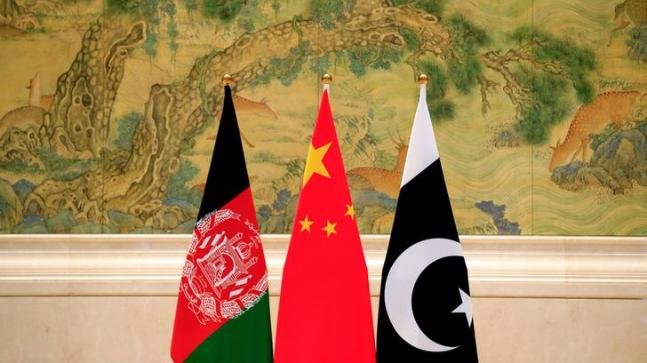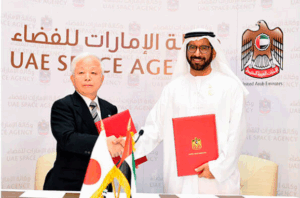As the historic intra-Afghan negotiations continue and the withdrawal of US troops is now in sight, there are plausible concerns about the future of Afghanistan, especially about China’s willingness to expand and consolidate its engagement in the country. Since it was announced in 2013, the Belt and Road Initiative (BRI) project has become the focus of Xi Jinping’s foreign policy and Afghanistan’s strategic assessment and its resources are one of the focal points of Beijing’s smile diplomacy. It remains to be seen what can be gained for Afghanistan from participating in the ambitious connectivity project and to what extent the increase in investments by China can contribute to the development of the country’s crucial sectors, first and foremost the infrastructure system which is a necessary precondition for the expansion of trade routes. At the same time, one needs to look carefully into China’s strategic interests in Afghanistan and how Beijing can benefit from the complicated political and social context influenced by the lack of security and stability in which the country has been living for decades.
The CPEC project
From a practical point of view, the BRI has never shown clear parameters, nor does it still have a final objective. For the purposes of the analysis conducted here, among all the projects announced, the trade corridor with Pakistan appears to be the worthiest of attention. The China-Pakistan Economic Corridor (CPEC), the 2,700 mi. route that will see the construction of modern infrastructure throughout Pakistan, is in fact considered the BRI’s flagship project, not only for its geostrategic position – since it links the Chinese autonomous region of Xinjiang Uygur to the port of Gwadar located on the border with Afghanistan – but mostly because Pakistan – as well as Afghanistan – represents the closest periphery to China essential for trade with the West. However, both countries have significant problems in terms of security and counterterrorism that could undermine the success of the project.
The CPEC is a large regional project that could benefit not only the economies of China and Pakistan, but also the economies of Afghanistan. Recognising the potential opportunities and benefits of participating in a project of this scale, the Afghan Government has expressed interest in joining the CPEC since October 2016. First of all, modern infrastructure in Pakistan – such as the two roads leading from DI Khan to Angoor Ada and Ghulam Khan, connecting with the Afghan provinces of Paktita and Khost respectively – could enable Afghan companies and investors to have easier access to the market in South Asia, thereby reducing import costs and increasing exports to the region. Furthermore, if Afghanistan becomes part of the CPEC, it could stabilise its economy, improve its opportunities and diversify its trading partners further, including for example China, Central Asia and countries in Europe with which the country does not currently have relations. In addition to economic benefits, the extension of the trade corridor could improve the security situation in Afghanistan.
In December 2017, Chinese’s Foreign Minister Wang Yi stated that China and Pakistan were in agreement and willing to extend the CPEC to Afghanistan and, in May 2018, during the second round of the trilateral strategic dialogue between the three countries in Beijing, the intention to continue the cooperation was reiterated and discussions continued on how to extend the corridor to Afghanistan. However, last July, during the third round that took place online due to the restrictive measures imposed by the pandemic, the main topics have regarded trilateral cooperation on the fight against Covid-19 and on the intra-Afghan negotiations, focusing only marginally on improving connectivity between countries within the BRI. To date, therefore, the project to extend the trade corridor in Afghanistan seems to exist only in the countries’ intentions and there are no more concrete plans or proposals in circulation that describe in detail the nature of the projects and the estimated capital for their implementation.
Sino-Afghan political and economic relations over the years
Over the last twenty years, China has progressively increased its involvement in Afghanistan by providing the country with development aid totalling around USD 240 million between 2001 and 2013 and by increasing its investments especially since 2014 after the withdrawal of NATO troops. In 2007, through an agreement signed between the Afghan government, the state-owned China Metallurgica Group consortium and the private company Jiangxi Copper Company Limited, China won the exclusive right to extract copper from the Mes Aynak mine in Logar province for USD 3.4 billion more than all its competitors. Beijing has thus strengthened its influence on a vital resource, planned the largest investment in Afghan history, promised to create thousands of new jobs and established itself as an undisputed trading partner of the Afghan government. As part of the agreement, China Metallurgica Group and Jiangxi Copper Company Limited have also allocated funds for the construction of schools, clinics, markets, mosques and a 400-megawatt power plant. Also, in 2011, the China National Petroleum Corporation (CNPC) announced its USD 700 million investment project in the Amu Darya oilfield, but the project was unsuccessful.
However, for China, economic assistance and investment are not the only activities of interest in Afghanistan. Afghanistan has the world’s largest unexploited reserves of copper, coal, iron, gas, cobalt, mercury, gold, lithium and thorium, valued at over USD 1 trillion. The sites of these deposits are open to international investors and China, the world’s largest economy, needs these reserves to sustain its exponential growth as its resources are not enough to meet domestic demand. This is why Beijing is strongly interested in assuming a predominant role in Afghanistan through the extension of the CPEC project, in particular the strengthening of its transport infrastructure, which would help to ensure the internal stability of the country, necessary for Chinese companies to work safely and supply China with additional natural resources. Moreover, the political situation in Afghanistan, from the Chinese point of view, poses a threat to its internal security, especially to the Xinjiang region on the border with Afghanistan.
China’s current role in Afghanistan
In the light of the analysis conducted so far, it can certainly be said that Beijing has intensified its engagement with Kabul after 2014 to ensure stability in Afghanistan in order to eradicate its security concerns and realise its economic ambitions. It is therefore in this context that China’s key role in recent years as a peace broker and provider of development aid and investment should be read. The fact that, in 2014 alone, it provided Afghanistan with USD 80 million in aid and, in September 2017, allocated around USD 90 million to development projects in the Afghan province of Badakhshan alone to create a military mountain brigade to protect its borders from Daesh is emblematic. So far, Chinese military presence in Afghanistan is geographically limited to Badakhshan province on the Afghan side of the border. It is therefore unlikely that Beijing will expand militarily into Afghanistan and intend to take over from Washington. China’s expansion is meant to be understand of an economic nature and aims, in the long term, to exploit the economic potential of Afghanistan.
In recent years, China’s concrete intention to extend the BRI to Afghanistan has been supported not only by the trilateral cooperation on the CPEC project, but also by the Memorandum of Understanding signed in 2016 between Beijing and Kabul. On that occasion, China allocated the first USD100 million in loans for infrastructure projects, which however seems small compared to the amount allocated for other countries, such as Pakistan. Under the aegis of the BRI, in 2016 the first rail freight link was built between the Chinese province of Jiansu and the city of Hairatan on the Afghan border. However, there is no shortage of problems since, on its return route from Afghanistan to Uzbekistan, the line runs empty as Afghan production of goods for export is still very low. Also, in April 2017, Beijing and Kabul signed an agreement on information technology and cooperation in the telecommunications sector: by October 2017, according to the Afghan Minister of Communications and Information Technology, 25 provinces in Afghanistan had already been connected by optic fiber. In support of China’s willingness to include Afghanistan in the BRI project, it should finally be noted that in October 2017 Afghanistan became a member of the Asian Infrastructure Investment Bank (AIIB) in order to further facilitate cooperation and infrastructure development in the country.
China’s attitude towards the integration of Afghanistan into the Belt and Road Initiative appears to be enthusiastic and positive, especially given the country’s strategic geographical position and the presence of a huge wealth of untapped resources in the country. However, compared to most of the 63 economies participating in the BRI, China still does not seem to consider Afghanistan as an integral part of the project and as an effective contributor country.
Conclusions
Since 2014, China has progressively attempted to strengthen its economic ties with Afghanistan, both because of its geostrategic position and, above all, because it is strongly interested in the natural reserves of which the country is rich. In order to meet the exponential growth of its domestic demand, Beijing also needs the resources of Afghanistan and is therefore inclined to include it in the BRI project, granting development aid and increasing investment in the country. As Afghanistan’s largest trading partner, China has also tried to contribute to the stabilization of the country in order to mitigate the risks to its internal security, especially in the Xinjiang border region, resulting from the war situation in which Afghanistan has been facing for decades.
On the other hand, Afghanistan still faces major economic difficulties due to the political context marked by decades of conflict, lack of investment, underdevelopment of infrastructure, drought, corruption and drug trafficking. In this context, expanding the economy and generating export-led growth has proved to be a particularly difficult challenge.
Although China has presented and continues to present the BRI as a win-win proposition, it is clearly driven and motivated by its own national interests. In addition to seeking resources, strengthening areas where it is not fully self-sufficient and forging political ties with its partners, China seeks primarily to create investment opportunities in order to pursue its economic development. However, extending the BRI project to Afghanistan, and in particular the trade corridor with Pakistan (CPEC), could have positive effects not only for China but also for Afghanistan, as it would bring economic benefits and could also significantly improve the quality of life of the Afghan population. But, until Afghanistan is pacified, there can be no development opportunities and it will be necessary to wait for the outcome of the intra-Afghan negotiations to see whether Beijing can really take concrete steps to expand the BRI in Afghanistan and whether it can return to the important role it played at the time of the Old Silk Road.
Picture credits: Tehran Times







Be First to Comment